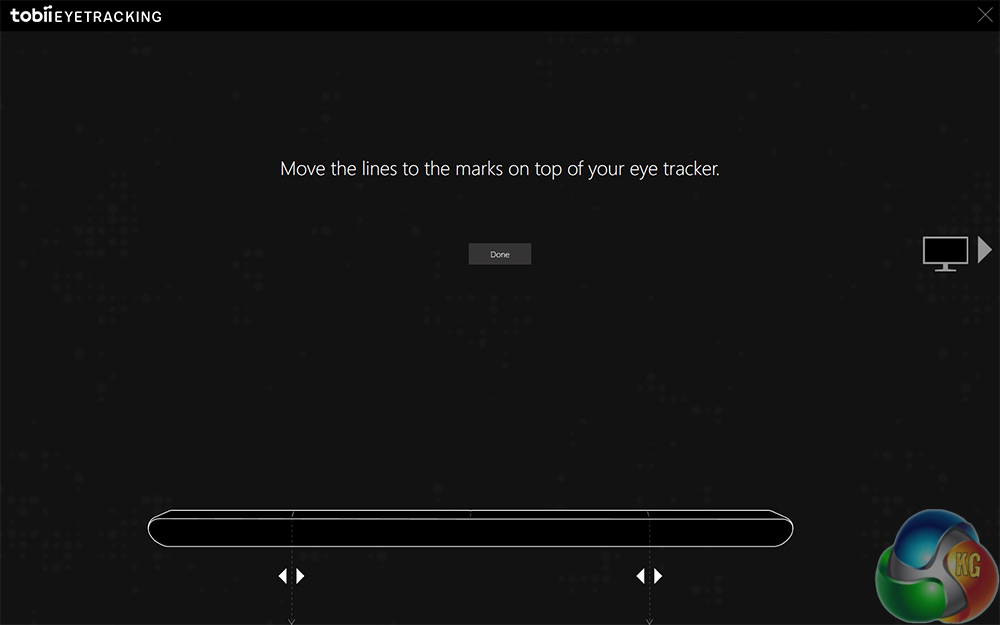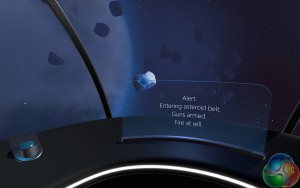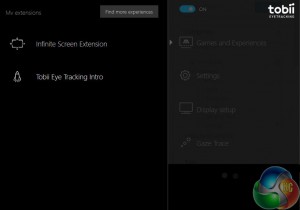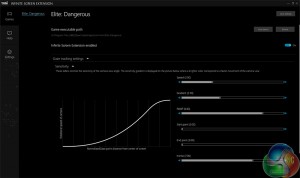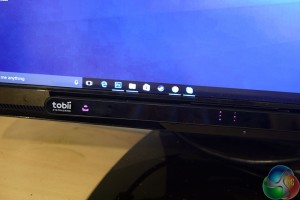Methodology
To test the Tobii 4C tracker I used it in a number of compatible games, attempting to get a feel for how the eye tracking works in different scenarios and how useful it can be. I also trailed some of its more general uses outside of gaming situations, to see if it is viable as a tool for general use.
Games used for testing included Assassin's Creed Syndicate, Elite Dangerous and The Hunter. I spent several hours with each game, getting a feel for how the eye tracking works and what additional functionality it offers.
The full list of compatible games is fairly extensive. Check that out here.
Installation
Setting up the 4C tracker is pretty simple. You plug it in, download the generic drivers and run the short set up software. The length of the cable does present some difficultly for anyone with their desktop on the floor – as this reviewer did, but fortunately it works just fine through a keyboard's pass-through USB port.
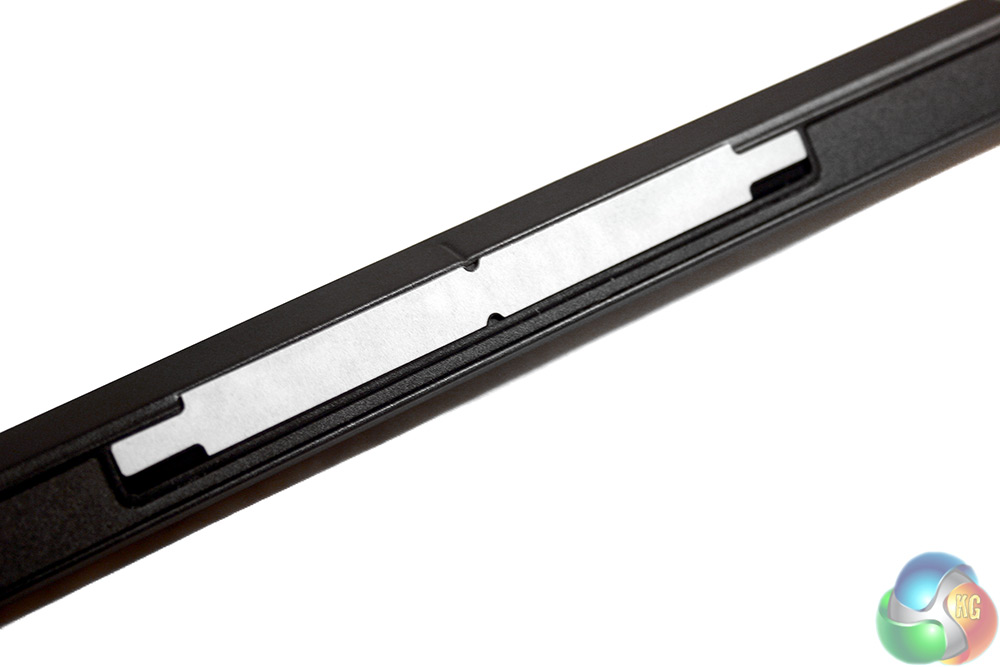
The magnets are strong enough, but the sticky backing leaves me worried that removing them would damage the monitor.
The software set up is very simple and helps you sit at the correct distance from the tracker and configure the edges of your screen. The tracker should work with sizes up to 27 inches with the 16:9 ratio, or up to 30 inches with 21:9 ratio. Anything bigger than that may not be tracked as effectively.
There is also a short intro mode which guides you on your first use of the eye tracker, explaining how it can be used and its various potential functions.
Games
Writing about eye tracking is a little like writing about virtual reality: it is hard to convey to someone why it is good, without getting them to try it. That said, while the benefits of virtual reality are easily encapsulated with flowery language and excitable statements, eye tracking sounds rather pedestrian if you describe what it does in a straight forward manner.
In games like The Hunter, looking at the edge of your real life screen moves the view in that direction. In Elite Dangerous you can use it to highlight enemies or look at screens in your cockpit and in Assassin's Creed you can pick a point to sling your grappling hook with it.
This is all rather simplistically worded as the actual function is more impressive and more deep than what is described here, but it is worth stating from the outset that I do not feel Eye Tracking changes how a game fundamentally feels. You do not put it in like a new graphics card and suddenly your game worlds change entirely or the experience is revolutionised forever.
That said, eye tracking does add some very interesting features which are certainly of a positive benefit, especially in some scenarios and is something I would like to see more of.
Set up helps you choose the parameters of your screen and the placement of your tracker.
For starters, eye tracking is a very intuitive, relaxed and easy interaction medium. When playing a slow paced game like The Hunter, being able to physically look around you with your eyes is a real treat. It feels more natural and there is even the added bonus that your walking direction is maintained, even if you look to the side to try and catch a glimpse of that elusive White Tail.
With the mountain of menus, screens and interface options in Elite Dangerous, I did not find it quite as easy to get to grips with, but again, flying along and wondering what is on the display to your left feels natural to gaze over in that direction and have the world pan over to it in time. It is not quite as positive a feeling as doing something like turning your head in Virtual Reality, but it gives that same sort of happy, “this makes sense,” feeling.
Assassin's Creed had the wonkiest implementation – CPU priority caused the tracker to switch off until I tabbed in and out – but perhaps the best usage in game. With the 4C in place you can use it to select targets for assassination, targets for your grappling hook and you can look around too. This is great when you are driving stagecoaches, as you can look to the side to check streets without needing to use a secondary control to do so – just your eyes.
My favourite usage of eye tracking though was auto-pause. Whenever I looked away from the screen – the game would automatically pause. That is a great little addition that I would love to see more games make use of.
Both Syndicate and Elite Dangerous support head tracking too, which while useful in that it can give you a heftier swing of the camera if you turn your head too, in practice that means that you are looking half-sideways at the screen, feeling rather silly. Head tracking is much better suited when the display moves with you – like VR.
Intro sequence introduces you to eye tracking with explosive asteroids
The real difficulty with eye tracking though, is that it cannot always tell your intention. Sometimes you do not want the screen to move, you just want to look at something specific on it. While still adjusting to the device, I would often find myself looking at an object in the environment, only to have to track it since the view changed a few milliseconds later. That was of particular notice when zoomed in or looking down the sights of my rifle in The Hunter. I do not want the gun to shake around with where I look while I try and line the shot up.
A similar issue cropped up in Assassin's Creed. There I wanted to just look around while walking, much as you can in The Hunter, but unless you are driving a stage coach your character will veer off and walk where you are looking. This does have the added benefit that you can traverse Victorian London with just your eyes and a single hand if you want, but I was looking forward to walking and looking independently from one another.
Infinite Screen is used in some games and offers much deeper customisation
It was most obvious during cut scenes. While the developers had set up cinematic camera angles, the scene would jump around as my eyes flicked around to take in the details. Eye tracking during a movie might offer some interesting entertainment options, but not when it is shoehorned in like this. It serves no purpose other than to shake up the cinematic quality of the video content.
But these slightly sub-par implementations are a symptom of the times rather than a weakness of the eye tracker itself. Eye tracking technology in commercial gaming is quite new and hasn't been focused on as it would be if every laptop in the world came equipped with one. I suspect however that as eye trackers pop up in VR headsets, we will see the same hardware become more common place on desktop systems and laptops – especially since it could be used for foveated rendering.
General Windows
General Windows usage of the eye tracker was not something I spent too much time doing – this is after all, a device aimed at gamers – but it does have some interesting uses. Gaze Trace is a nice way to see where you are eyes are being tracked and can even be used in game to make things easier to understand.
In a more functional sense, with the eye tracker in place you can select which window to open when alt-tabbing between them. Wait for the selection window to appear and then look at the one you want to jump to.
The hardest feature to get to grip with, but perhaps one that would be useful for those with limited mobility, was the Windows Warp on Mouse Move or Button command. That would let you move the mouse point to where you are looking with a move or click. Great for jumping around but not very easy to get to grips with. At least not without a lot of practice.
Be sure to check out our sponsors store EKWB here
 KitGuru KitGuru.net – Tech News | Hardware News | Hardware Reviews | IOS | Mobile | Gaming | Graphics Cards
KitGuru KitGuru.net – Tech News | Hardware News | Hardware Reviews | IOS | Mobile | Gaming | Graphics Cards


